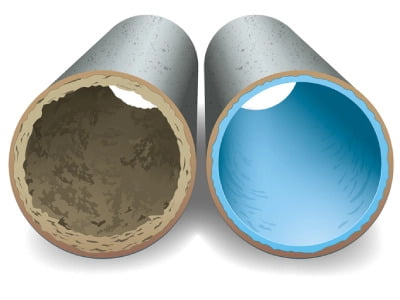Drain relining as a modern and eco-friendly solution to weakened drains, offers a multitude of advantages, not only to the drainage system itself but to the surrounding environment. Its primary goal is to enhance the structural integrity of pipes and address any damage they may have incurred over time in a quick and cost-effective manner. In the past, repairing a compromised drain often involved the laborious process of excavation and complete replacement, or even relocation to a less environmentally sensitive location. At Grey-Water, we have embraced non-invasive lining techniques alongside cutting-edge relining equipment, eliminating the need to disrupt the natural environment.
One of the most significant environmental benefits of drain relining is the reduction in soil disruption. Traditional drain repair methods typically require extensive excavation, which can lead to soil erosion, disturbance of native vegetation, and the release of sediment and pollutants into nearby bodies of water. In contrast, drain relining mitigates soil disturbance, preserving the local ecosystem and reducing the risk of soil erosion. Further damage is also avoided to the drains themselves; untreated leaks and structural issues can worsen over time, leading to problems that leave no recourse but to dig up drains which will cost more ultimately and require intervention and permissions from local authorities.
Furthermore, drain relining reduces the carbon footprint associated with drain repairs. Traditional methods, such as excavation and replacement, often require heavy machinery, transportation of materials, and a substantial amount of energy. This results in increased greenhouse gas emissions and contributes to environmental degradation. In contrast, drain relining is a more sustainable approach that minimises the use of heavy machinery and reduces energy consumption, thereby lowering its environmental impact.
Drain relining is particularly beneficial for drains located in hard-to-access areas. These areas may include densely populated urban environments, environmentally sensitive zones, or areas with limited accessibility due to infrastructure constraints. Traditional repair methods in such locations can be highly disruptive and expensive, often requiring special permissions and equipment. Drain relining offers a non-invasive alternative, reducing the disruption to the surrounding environment, along with the need for complex logistical arrangements.

The longevity of drain relining contributes to long-term environmental sustainability. By reinforcing the structural integrity of pipes, relining extends the lifespan of the drainage system, reducing the frequency of repairs and replacements. This not only saves resources but also lessens the environmental impact associated with the production and disposal of drainage materials.
Conventional methods of addressing damaged drains were known to be expensive, demanding greater effort and labour, extending project durations – not to mention the risks posed to nearby properties. Relining, on the other hand, is swift and efficient, yielding enduring outcomes. Excavating drains and disrupting soil, grass, and natural habitats can have a cascading impact, degrading the quality of local flora and fauna. Leaky drains infiltrate the ground with waste materials. By eliminating excavation, energy consumption is reduced, championing a more ecologically conscious process.
Our approach involves the use of a fibre liner infused with a chemical blend to coat the damaged drain. Once inserted, we employ either air or water to expand the lining using an inner tube. After a certain period of time, the lining solidifies and the inner tube is removed, resulting in a durable repair in the form of a lining. While the potential intrusion of roots presents a drain maintenance challenge, the lining effectively prevents their entry without causing harm to local ecological processes. This not only benefits the surrounding environment but also reduces the necessity for continual maintenance.
In certain instances, the option of drain relining may not be the most practical solution. Typically, relining occurs when the pipe has suffered extensive damage, resulting in larger gaps that pose significant challenges for this process to conform to the existing structure effectively. Conversely, if the damage is not broad enough to justify relining
In certain instances, drain relining might not be a feasible choice. This situation arises only when the pipe is severely damaged, exhibiting larger gaps that make it particularly challenging to conform to the structure. Conversely, if the pipe damage isn't substantial enough to warrant relining, patching presents another viable alternative. Patching involves targeted repair of localised areas within the pipe, addressing specific damaged sections without the need for relining the whole pipe. This approach offers a cost-effective, fast, and efficient solution for less severe pipe issues, ensuring resources are allocated to address the damage directly.

